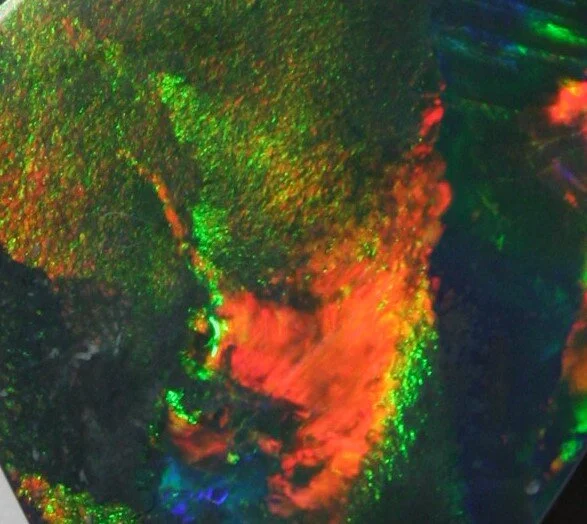Nomenclature
In more recent times and in conjunction with the discovery of some new precious opal occurrences as well as other discoveries of non-precious or ornamental opal varieties many in the opal industry in particular and the jewellery industry as a whole have begun to suggest that the Opal Nomenclature as published by the GAA in the Australian Gemmologist in 1997.
In the discipline of Gemmology (which is a subdivision of mineralogy as a classification. The terminology or classification of opal is different. Principally Gemmology discusses the use of minerals as gemstones which may be fashioned (cut and polished ) for use in the jewellery industry. Typically the classifications or terms important to gemmology are, Natural, Synthetic, Imitation, Composite or Treatment .
The classification of opal has always presented difficulties and many different names have been given to opals. Broadly speaking opal types have often been named by:-
Natural Opal (Type 1) or Type 1A, Natural Hydrophane opal (Type 1B) or Type 4, Natural Boulder opal (Type 2), Natural Matrix opal (Type 3)
There are two ways of describing opal types by way of its geological formation. The first method has always been to describe opal by the name of the rock type that the opal is associated with. By this method we distinguish two and potentially three types of opal. They are “Volcanic opals”, and “Sedimentary opals” and are typically used in different types of literature. The third type of opal then is “Metamorphic opal”. This classification of opal can be misleading when it is used to discuss opal, as it is impossible for opal to survive in the volcanic geological environment.
The original types of opal for the mineralogical classification that are found in most textbooks contain a combination of some of the terms already discussed above as well as some terms descriptive of the phenomena seen in different opals such as sheen (girasol opal) or inclusion (moss opal). However with the discovery of the structure of opals in 1965 at the CSIRO, Segnit et al proposed a new mineralogical nomenclature in which types of opal are based on the opal structure as revealed by X-Ray diffraction techniques.






